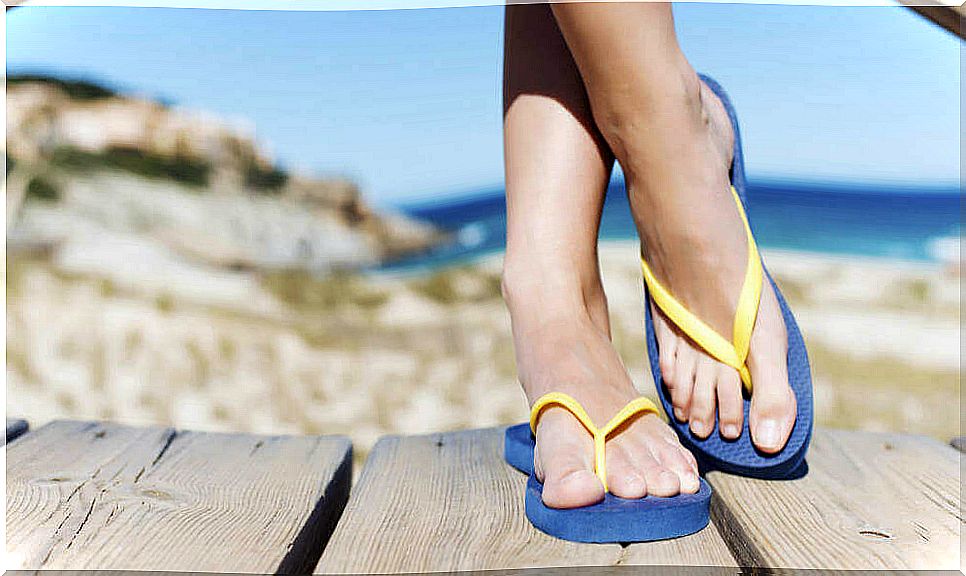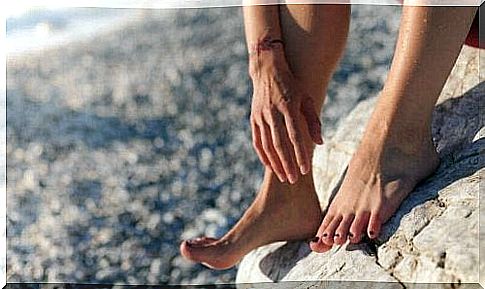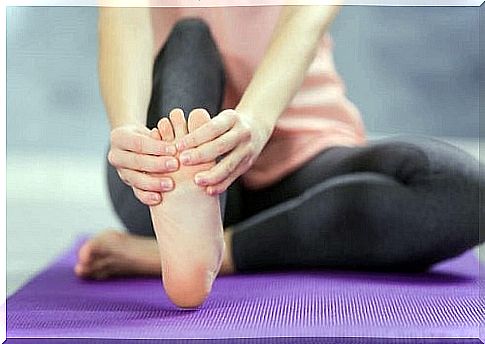Flip-flops And Possible Foot Problems

Flip-flops, so common in the summer, can cause a variety of foot problems.
They have always been appreciated for the comfort, delicacy and freedom of movement given to the feet and there is evidence of the use of flip-flops since ancient times in Eastern and Western cultures, in Japan, Egypt, Greece and Rome.
Currently, the Brazilian Havaianas are among the most famous in the world . Solid and lightweight EVA rubber flip flops that have enjoyed international success for the variety of models and colors.
However, they seem not to be the most suitable footwear. Let’s see why.
Excessive use of flip flops: possible foot problems
1-Lack of impact cushioning

The act of walking is also subject to the law of action and reaction of physics. This means that when the necessary force is exerted to place the foot on the ground, a reaction of equal value is generated to balance the equation. This is why when walking the body remains stable on the ground, it does not sink or lose balance.
What does physics have to do with flip flops? When walking, an impact is generated not only on the feet, but on the whole body, also because the feet are nerve endings. That’s why the shoes have been perfected over time and some are designed specifically for walking and others for high impact sports.
Flip flops are unable to cushion this impact, especially when walking on harder surfaces such as asphalt. The rubber sole is not enough to protect the feet and support the weight of the body.
This adds to their totally flat shape, which can cause back pain and bad posture. It is common to see people dragging their feet when wearing flip-flops, because they don’t hold well and don’t give their feet stability.
The result can be progressive pain in the muscles of the legs, back and hips.
2-Lack of foot protection

Another problem relates to the exposure to which the feet are subjected when wearing flip-flops. The construction of these shoes is so simple and light that it offers little or no protection.
On the one hand, the feet are vulnerable to injuries, burns, insect bites and various natural factors. All taking into account the fact that these shoes are more used in summer, when the sun’s rays are much more intense and the proliferation of insects is greater.
On the other hand, the beach, swimming pools and clubs are for collective use. This means that the risk of coming into contact with microorganisms is considerable. Flip-flops do not cover the feet, but leave them totally exposed to any kind of contamination.
In more extreme cases, impact and excessive exposure can affect the nerve endings in the feet. This can cause problems with the nervous system, thermal regulation of the organism and general well-being of the person.
3-Skin diseases and mycosis

Some diseases are more common in the summer. The hottest season of the year carries some risks due to excessive exposure to the sun, humidity, and topical microorganisms in some places.
Another classic summer problem is the proliferation of fungi due to heat and humidity. Cases of mycosis multiply on hot days.
The latter two cases, however, are subject to controversy. Some specialists are inclined to favor the use of flip-flops in the summer, as they offer perspiration and fresh air to the feet. According to them, wearing this type of footwear is good because it helps to dry the feet and prevents direct contact with microorganisms in the sand.
Other scholars, however, advise against its use due to the exposure of the foot to various microorganisms present in water and sand. They also claim that there is a higher risk of skin cancer due to the excessive incidence of sunlight on the feet.
Keeping in mind that the main goal of shoes is to provide support and protection to the feet, flip flops do not fulfill these requirements. However, with good hygiene and adequate sun protection, it is possible to enjoy the summer without causing damage to your feet.









